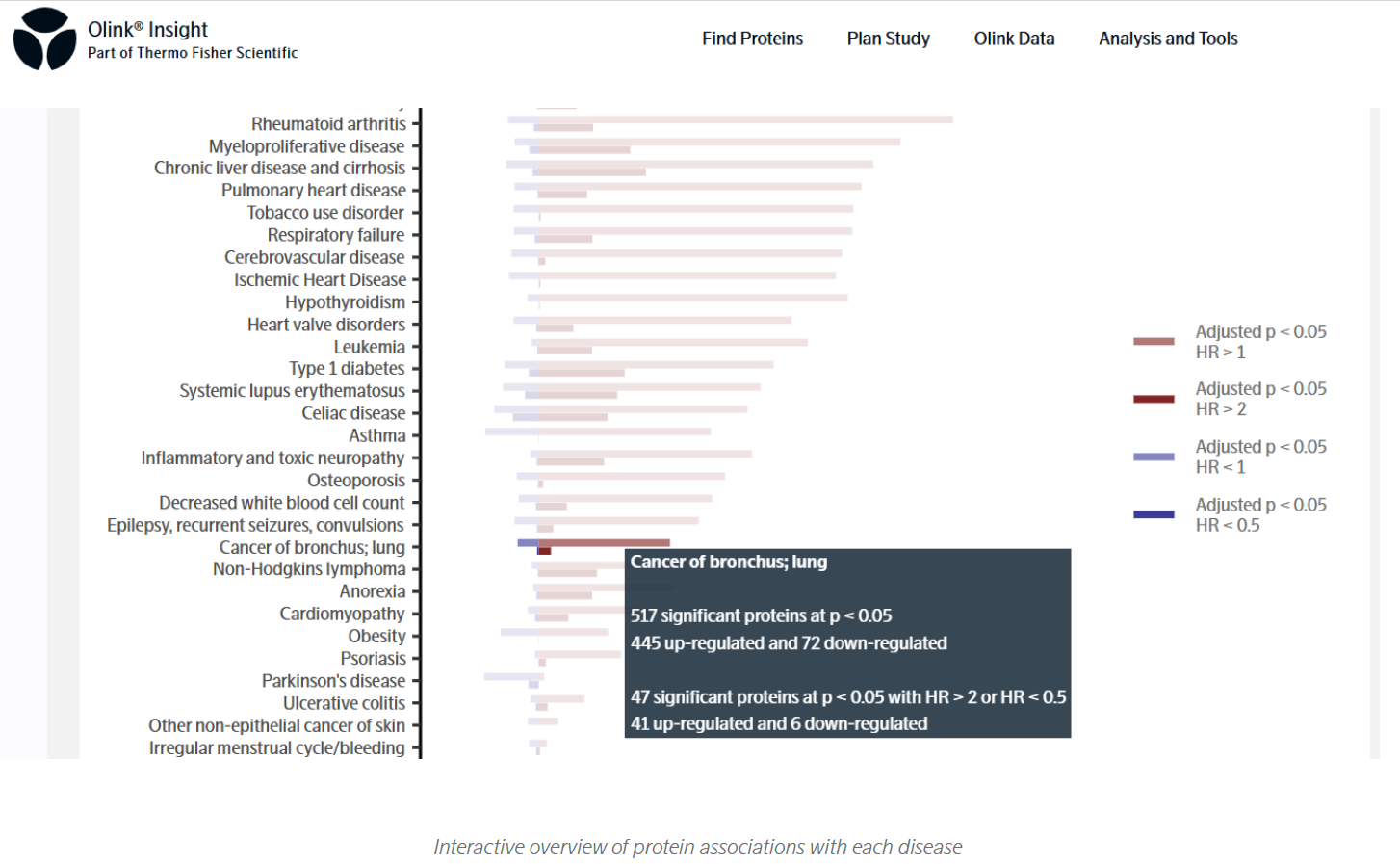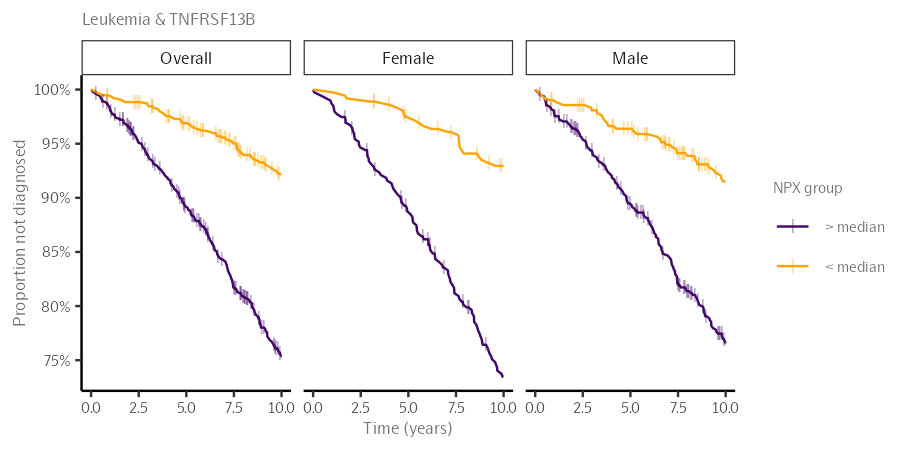The Proteomics of Disease Risk in the UK Biobank
Empowering preventive medicine through proteomics
Preventive medicine is a key goal for the development of future healthcare, but this requires the ability to accurately assess disease risk, preferably before the onset of clinical symptoms. Genetic, clinical, demographic and lifestyle variables can point towards the risks of incident disease, but significantly improving predictive accuracy remains an unmet clinical need.
Proteomics is increasingly used to gain new insights into the biology driving human disease and the ability to measure thousands of proteins at population scale in prospective cohorts of essentially healthy individuals is revolutionizing our ability to predict future disease risks.
Inform your own studies via a landmark dataset
As described in a new Case Study that you can access via the link below, you can now explore the associations of ~3,000 proteins with more than 100 diseases, helping you to plan and/or contextualize your own proteomics projects. This data comes from a landmark study where Olink Explore 3072 was used to measure baseline samples from >50,000 individuals in the UK Biobank Pharma Proteomics Project, with clinical follow-up for incident disease diagnosis for >10 years.
Read more in a new case study!
This remarkable resource is openly available to the research community as one of several interactive data stories in Olink® Insight – a powerful online platform designed to empower the interpretation of complex proteomic datasets in the context of existing biological knowledge. Below, we summarize how the Proteomics of Disease Risk, data story can give you valuable insights into the known disease associations for your proteins of interest.
Disease overviews
Protein association results as well as summary statistics for 107 diseases are available for download, totaling ~300,000 protein-disease associations. To showcase the results in the data story, 40 key diseases are focused on in more detail. Overview data shows the diseases included in each category, the number of patients diagnosed with each disease type (split by sex), and the age of onset and average age at baseline broken down for each disease category.
You can quickly see the number of proteins associated with each disease via an interactive figure that summarizes the Cox regression analysis of individual proteins with the different diseases. Hovering over the bar for a specific disease provides more details on the total number of proteins and their breakdown in terms of their direction and effect size of disease associations.

Detailed analyses
In addition to the disease overviews, the data story presents selected in-depth results focused on specific diseases, specific proteins, or combinations thereof. You can access views that rank the associations of individual proteins with each disease based on statistical significance and/or degree of risk for each disease. You can also access Kaplan-Meier survival plots showing how some key proteins contribute to subsequent disease risk and its development over time.

Explore your proteins of interest
Olink Insight also enables you to upload and save your own protein lists and annotate them with the disease association data, enabling you to better plan your studies or contextualize your findings.
Other outstanding proteomic datasets can also be used for annotations, including normal range variations, known pathway and disease associations, tissue enrichment, genetic associations and drug target status.
